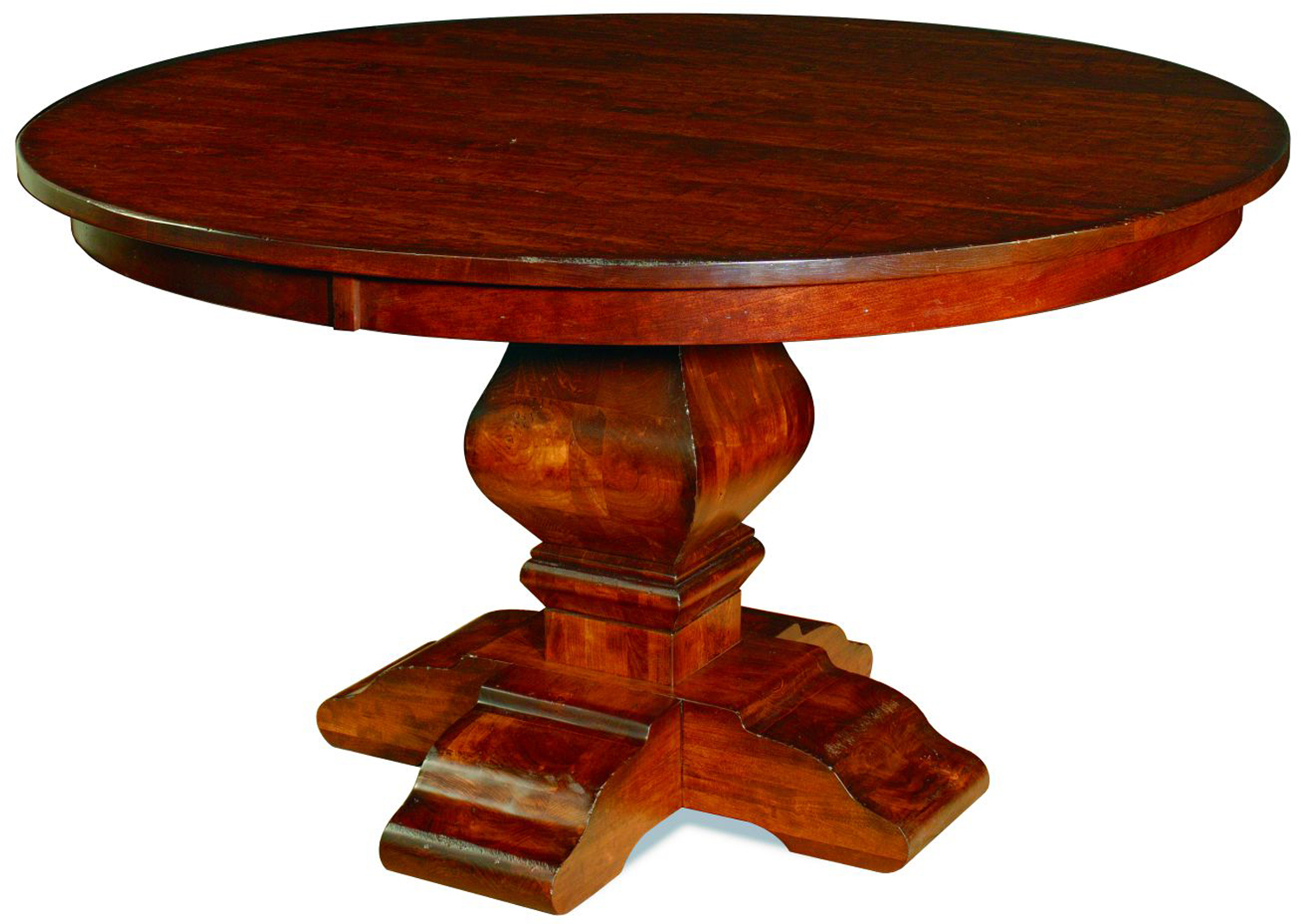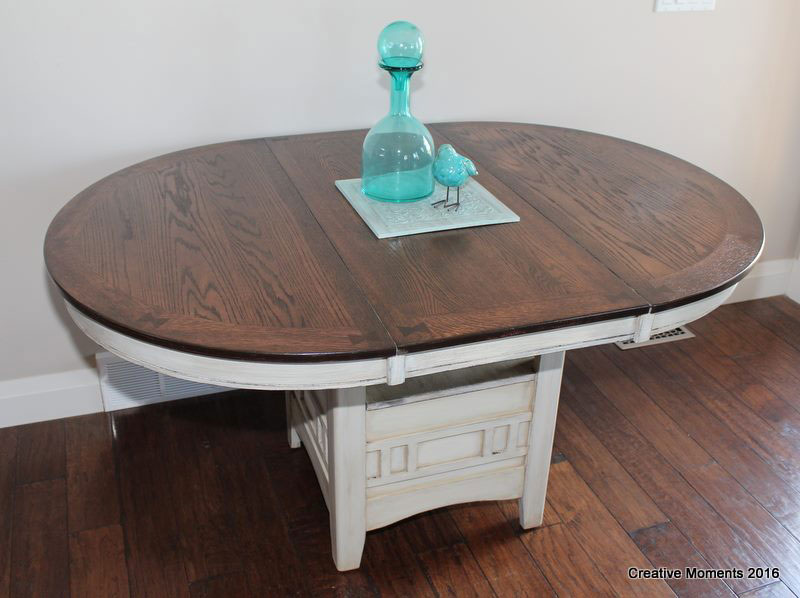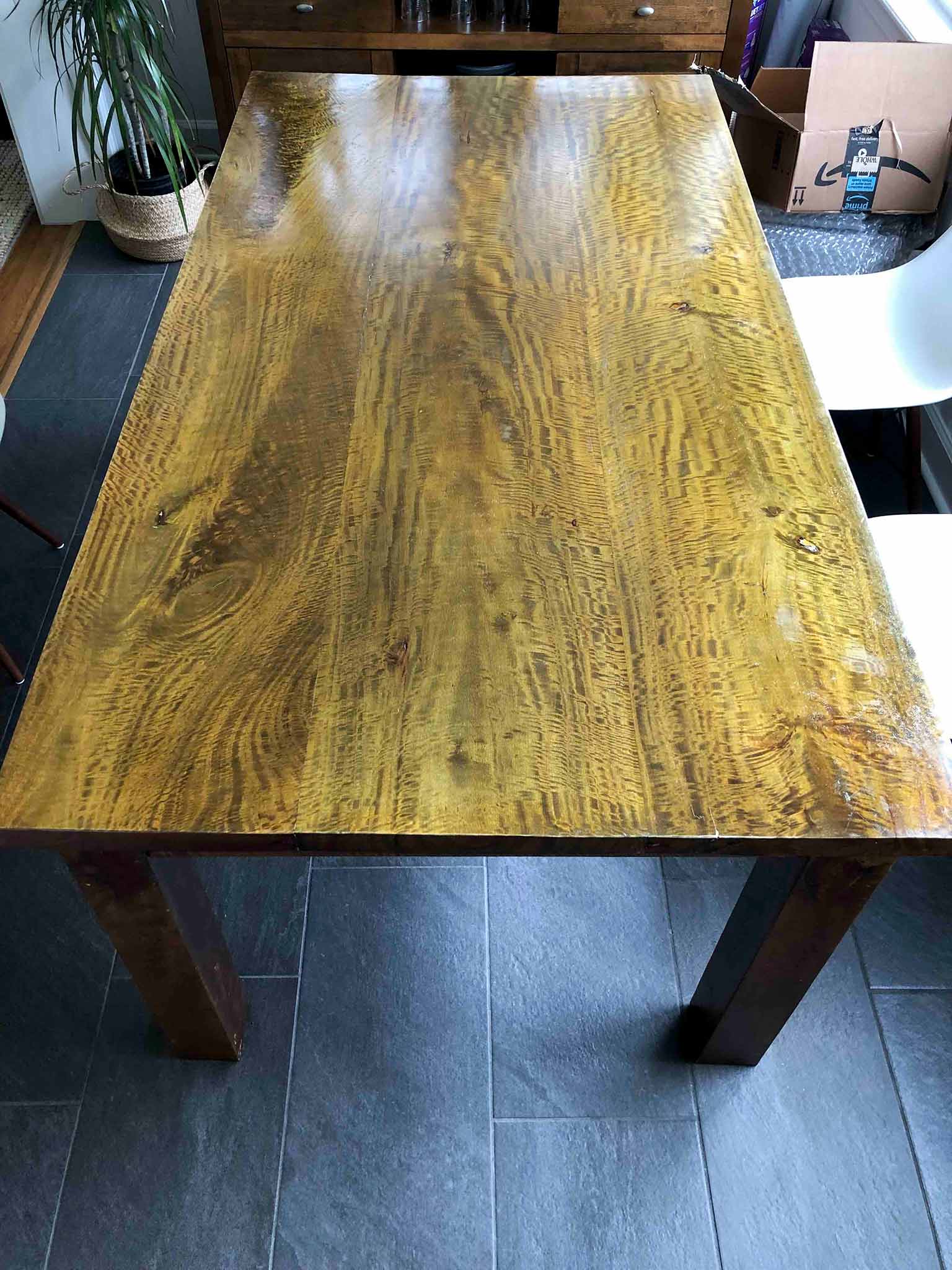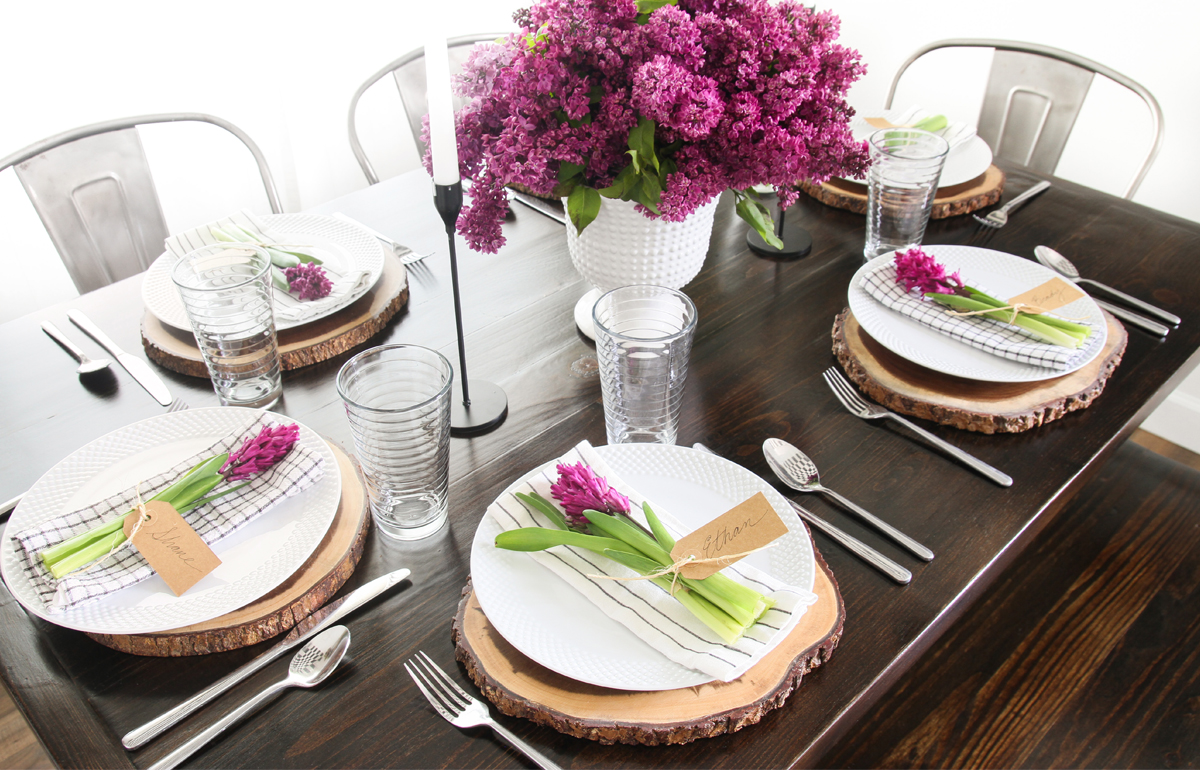Are you looking to give your dining room table a fresh new look? Staining is a great way to update the appearance of your table and bring out its natural beauty. But before you dive into the staining process, it's important to understand the steps involved and the best techniques to achieve a beautiful and long-lasting finish. In this guide, we'll walk you through the process of staining dining room tables, from preparation to finishing touches.Staining Dining Room Tables: A Step-by-Step Guide
If you have an old dining room table that has seen better days, refinishing it can bring it back to life. The process involves stripping off the old finish, sanding down the surface, and applying a new stain. This can be a time-consuming and labor-intensive process, but the end result is well worth it. You'll have a like-new dining room table that showcases its natural wood grain and color.How to Refinish a Dining Room Table
Staining your dining room table yourself can save you money and give you a sense of accomplishment. There are several techniques you can use to achieve different looks, such as using multiple coats for a deeper color or using a dry brush technique for a more rustic finish. Whichever technique you choose, make sure to follow the instructions carefully and take your time for the best results.DIY Staining Techniques for Dining Room Tables
The type of stain you choose for your dining room table will depend on the type of wood it's made of and the color you want to achieve. Some popular options include oil-based stains, water-based stains, and gel stains. Each type has its own advantages and disadvantages, so it's important to research and select the best one for your specific project.Best Stains for Dining Room Tables
If you're not a fan of the natural wood look, you may be considering painting your dining room table instead of staining it. While painting can be a fun and creative option, it's important to note that it will completely cover the wood grain and texture. Staining, on the other hand, allows the natural beauty of the wood to shine through. It's all about personal preference, so consider the look you want to achieve before making a decision.Staining vs. Painting Dining Room Tables
When selecting a stain for your dining room table, there are a few factors to keep in mind. First, consider the type of wood your table is made of and its natural color. You'll want to choose a stain that will enhance the wood's natural beauty, rather than cover it up. Additionally, consider the level of gloss or shine you want for your table. Some stains come in different finishes, such as matte, satin, or glossy.Tips for Choosing the Right Stain for Your Dining Room Table
Proper preparation is key to achieving a successful staining job. Before you start staining, make sure to thoroughly clean and sand your table to remove any dirt, grime, or old finish. This will ensure that the stain is applied evenly and will adhere properly to the wood. You may also want to use a wood conditioner to help the stain penetrate evenly.How to Prep Your Dining Room Table for Staining
Staining can be a tricky process, and there are some common mistakes that many people make. These include not properly sanding the table, not using enough stain, or applying the stain too thickly. These mistakes can result in an uneven or blotchy finish. It's important to carefully follow the instructions and take your time to avoid these pitfalls.Common Mistakes to Avoid When Staining Dining Room Tables
Once you've successfully stained your dining room table, it's important to protect it to ensure the finish lasts as long as possible. You can do this by applying a clear topcoat, such as polyurethane, to seal the stain and protect it from scratches and spills. It's also important to regularly clean and maintain your table to keep it looking its best.How to Protect Your Stained Dining Room Table
Still have some questions about staining your dining room table? Here are some frequently asked questions that may help:Staining Dining Room Tables: FAQs
Staining Dining Room Tables: A Simple Guide to Refreshing Your Space

The Importance of a Dining Room Table
 A dining room table is more than just a piece of furniture. It is the centerpiece of your dining room and sets the tone for the entire space. Whether you use it for family dinners, hosting gatherings, or as a workspace, the dining room table is an essential element of any home. That's why it's important to keep it looking its best and well-maintained. Over time, tables can become worn, scratched, or faded. If your dining room table is starting to lose its luster, staining it can be an easy and cost-effective way to give it a fresh new look.
A dining room table is more than just a piece of furniture. It is the centerpiece of your dining room and sets the tone for the entire space. Whether you use it for family dinners, hosting gatherings, or as a workspace, the dining room table is an essential element of any home. That's why it's important to keep it looking its best and well-maintained. Over time, tables can become worn, scratched, or faded. If your dining room table is starting to lose its luster, staining it can be an easy and cost-effective way to give it a fresh new look.
The Benefits of Staining Your Dining Room Table
 Staining your dining room table not only rejuvenates its appearance, but it also provides protection from wear and tear. The stain acts as a sealant, preventing scratches and spills from damaging the wood. It also enhances the natural beauty of the wood, bringing out its unique grain and color. Staining can also give you the opportunity to change the look of your dining room by choosing a different stain color or finish. With so many options available, you can easily match your table to your existing decor or create a whole new look for your space.
Staining your dining room table not only rejuvenates its appearance, but it also provides protection from wear and tear. The stain acts as a sealant, preventing scratches and spills from damaging the wood. It also enhances the natural beauty of the wood, bringing out its unique grain and color. Staining can also give you the opportunity to change the look of your dining room by choosing a different stain color or finish. With so many options available, you can easily match your table to your existing decor or create a whole new look for your space.
Steps for Staining Your Dining Room Table
 Before you begin staining, it's important to properly prepare your table. This includes sanding down any rough spots or imperfections and cleaning the surface thoroughly. Once your table is prepped, you can start the staining process.
Featured keywords such as "staining", "dining room table", "refreshing", and "space" should be emphasized in the content.
Related main keywords like "house design", "furniture", and "home" should also be incorporated to enhance SEO optimization.
First, choose a stain color that complements your dining room and fits your personal style.
Popular stain colors include espresso, walnut, and gray.
Next, use a clean cloth or brush to apply the stain in the direction of the wood grain.
Be sure to work in small sections and wipe off any excess stain for an even finish.
Once the stain is dry, you can add a protective topcoat for extra durability.
Remember to follow the manufacturer's instructions and allow proper drying time between coats.
Before you begin staining, it's important to properly prepare your table. This includes sanding down any rough spots or imperfections and cleaning the surface thoroughly. Once your table is prepped, you can start the staining process.
Featured keywords such as "staining", "dining room table", "refreshing", and "space" should be emphasized in the content.
Related main keywords like "house design", "furniture", and "home" should also be incorporated to enhance SEO optimization.
First, choose a stain color that complements your dining room and fits your personal style.
Popular stain colors include espresso, walnut, and gray.
Next, use a clean cloth or brush to apply the stain in the direction of the wood grain.
Be sure to work in small sections and wipe off any excess stain for an even finish.
Once the stain is dry, you can add a protective topcoat for extra durability.
Remember to follow the manufacturer's instructions and allow proper drying time between coats.
Tips for Maintaining Your Newly Stained Table
 To keep your dining room table looking its best,
consider using coasters and placemats to protect the surface from heat and spills.
It's also important to
regularly dust and wipe down your table with a gentle cleaner to prevent buildup.
Avoid using harsh chemicals or abrasive cleaners, as they can damage the finish. With proper care, your newly stained table can last for years to come.
In conclusion,
staining dining room tables
is a simple and effective way to refresh your space and bring new life to your dining room. By following these steps and tips, you can easily achieve a professional-looking finish and enjoy a beautiful and well-maintained table for years to come.
So why wait? Give your dining room table the love and attention it deserves and watch your space transform.
To keep your dining room table looking its best,
consider using coasters and placemats to protect the surface from heat and spills.
It's also important to
regularly dust and wipe down your table with a gentle cleaner to prevent buildup.
Avoid using harsh chemicals or abrasive cleaners, as they can damage the finish. With proper care, your newly stained table can last for years to come.
In conclusion,
staining dining room tables
is a simple and effective way to refresh your space and bring new life to your dining room. By following these steps and tips, you can easily achieve a professional-looking finish and enjoy a beautiful and well-maintained table for years to come.
So why wait? Give your dining room table the love and attention it deserves and watch your space transform.

















































:max_bytes(150000):strip_icc()/Dining-table-shapes-1391525-V1-2922f1384f28456892b5901f75afcddb.gif)









/dining-room-table-decor-ideas-21-mindy-gayer-marigold-project-6a8c8379f8c94eb785747e3305803588.jpg)



























:max_bytes(150000):strip_icc()/home-theater-room-getty-vostok-57f55aeb3df78c690f118170.jpg)

